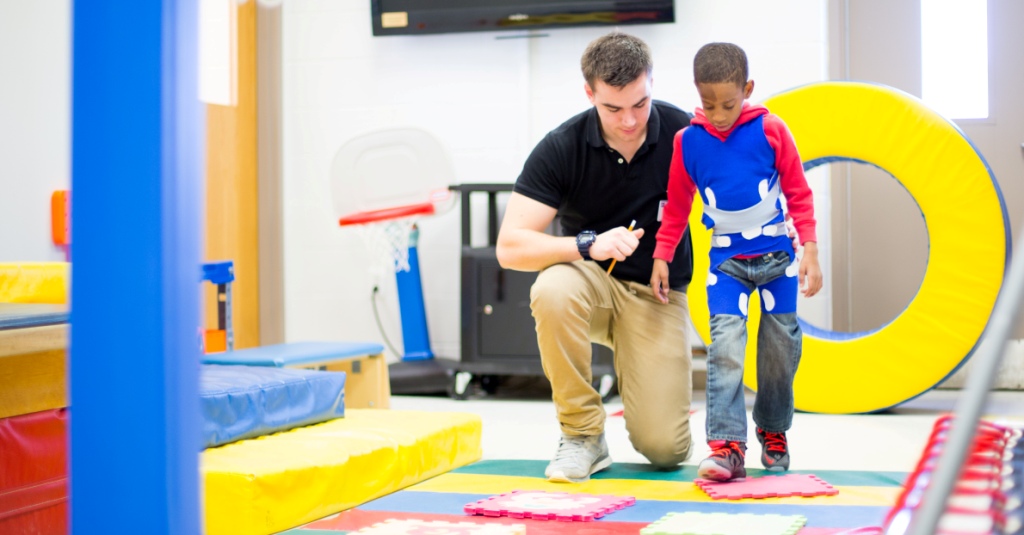how can physical therapy help children with cerebral palsy?
For those who are not familiar with cerebral palsy, it is an umbrella term used to describe a wide range of disorders that affects muscle tone, movement, or posture. Cerebral palsy is a byproduct of damage that

occurs to the brain, typically before birth. As far as signs and symptoms of cerebral palsy, they can vary significantly from one person to the next and will usually start to present themselves during infancy or preschool years. Some of the more common signs and symptoms of this neurological disorder include impaired movement, which is often accompanied by abnormal reflexes, poor posture, involuntary movements, and difficulty walking. It is also important to note that those with cerebral palsy may also have to contend with a decrease in range of motion, which is often brought on by severe muscle stiffness. Fortunately, physical therapy can help ease some of the symptoms associated with cerebral palsy.
Many Westchester physical therapy practices will use a variety of treatments to improve strength, mobility, and flexibility in those who are struggling with cerebral palsy. So although physical therapy cannot resolve all aspects of this neurological disorder, it can benefit those who are struggling with these specific symptoms. Not surprisingly, many parents are open to the idea of having more options available to them when it comes to helping their children cope with some of the more debilitating symptoms of cerebral palsy. According to many Westchester physical therapy practices, certain exercises and massage techniques can significantly improve mobility and reduce the risk of developing certain cerebral palsy-related complications, some of which include:
- Difficulty eating
- Drooling
- Communication problems
- Bowel obstruction
- Vomiting
- Constipation
WHAT TO EXPECT DURING PHYSICAL THERAPY
Understandably, many parents will have some concerns when it comes to starting their children on a physical therapy regimen to combat symptoms of cerebral palsy. If you're a parent who shares this concern, you're encouraged to continue reading. When a parent brings their child to a physical therapy Westchester practice, for example, the physical therapist will perform a series of tests to determine the severity of a child's cerebral palsy. These tests will provide invaluable insights related to the following:
- Flexibility
- Neurological development
- Physical capabilities
- Sensory development
- Balance
- Respiratory function
- Reflexes
Based on the results of these tests, your child's physical therapist will recommend a course of treatment that will improve their physical and functional skills, reduce the risk of cerebral palsy-related complications, prevent deformities, and much more. Some of the most common forms of physical therapy for those struggling with cerebral palsy include
Practicing weight exercises using good posture – Studies show that practicing weight exercises while simultaneously maintaining good posture helps to improve muscle response in children with cerebral palsy. These physical therapy exercises include side sitting, squatting, kneeling, half-standing, and other exercises. Along with improved posture and muscle response, these exercises can help with mobility and flexibility, according to many physical therapy Westchester practices that specialize in treating children.
Closed kinetic chain exercises – This form of physical therapy is designed to help improve voluntary movements while minimizing involuntary movements, which, for many children, is par for the course when it comes to battling cerebral palsy. Beyond that, these exercises can go a long way toward improving their posture as well. Additional benefits of closed kinetic chain exercises include
- Improved muscle flexibility
- Stronger muscles
- Increased range of motion in legs and arms
Joint balancing – This form of physical therapy helps children become more independent when it comes to walking and other activities that require engaging their joints and muscles. To help children with this exercise, a physical therapist or an experienced practitioner at a chiropractor Westchester practice will hold whatever joint the child is incapable of controlling on their own and gently guide it into an optimal position. The premise behind this exercise is that the child will eventually be able to control these joints by themselves and engage in a variety of activities without needing assistance.
BOTTOM LINE
All in all, physical therapy for cerebral palsy offers a wide range of benefits, especially when it comes to improving mobility and allowing children to move around independently. Of course, physical therapy cannot resolve all aspects of this neurological disorder, but most parents and physical therapists will agree that it complements traditional treatments and can go a long way toward improving a child's overall quality of life. To learn more about how physical therapy can help children struggling with cerebral palsy, consider scheduling a consultation with a physical therapist or a chiropractor Westchester practice today. You can also find a facility in your area by doing a Google search using the keywords "physical therapy near me" or "physical therapy near me for children."
Office Locations
Los Angeles
8810 South Sepulveda Blvd Los Angeles,
CA 90045
Contact Us
Have a question? Contact us today. We welcome patients from all over the world and would like to help you look your best. Whether it’s regarding a small headache or post-surgical rehab, Dr. Naim is experienced and will be able to recommend what’s best for you.
8810 South Sepulveda Blvd,
Los Angeles, CA 90045
310 464 1891
info@premierechiro.com
